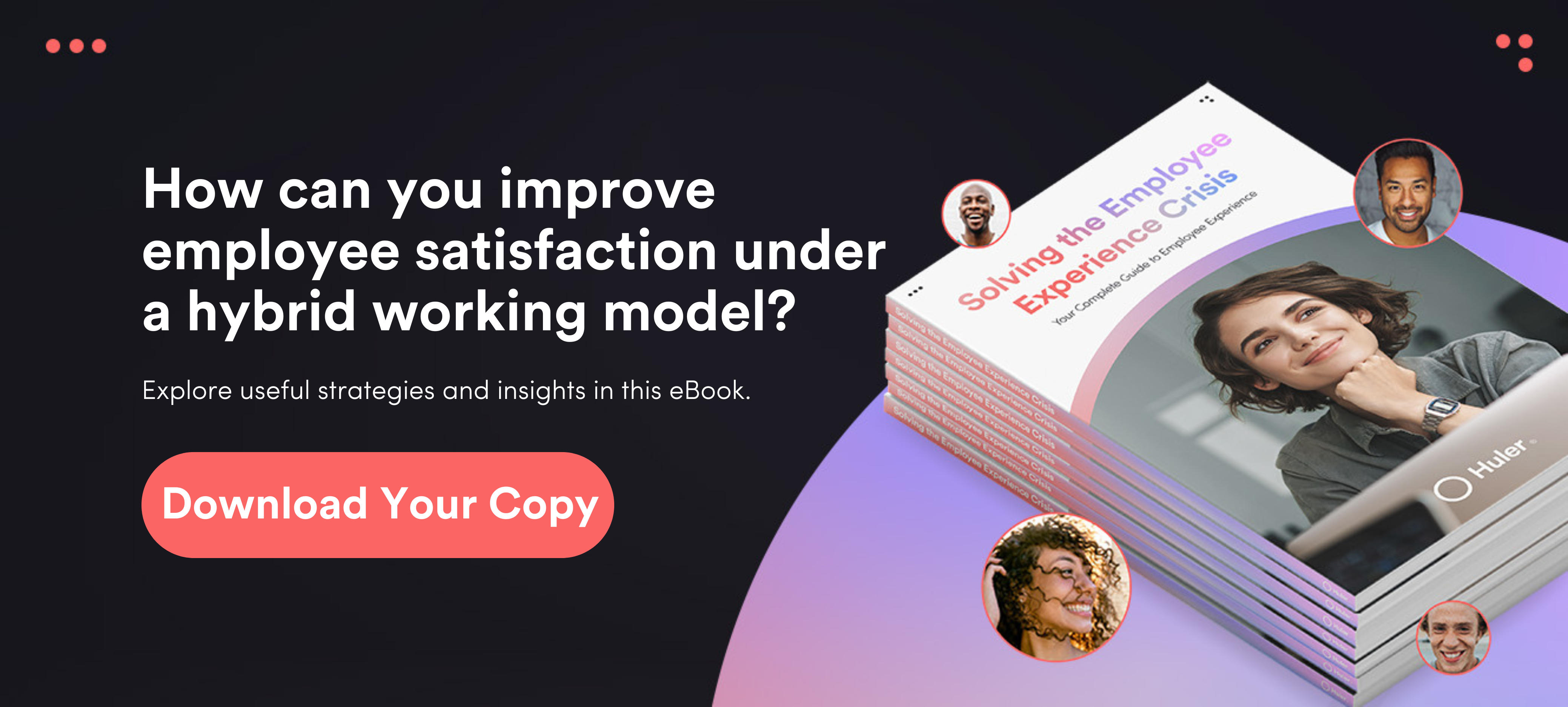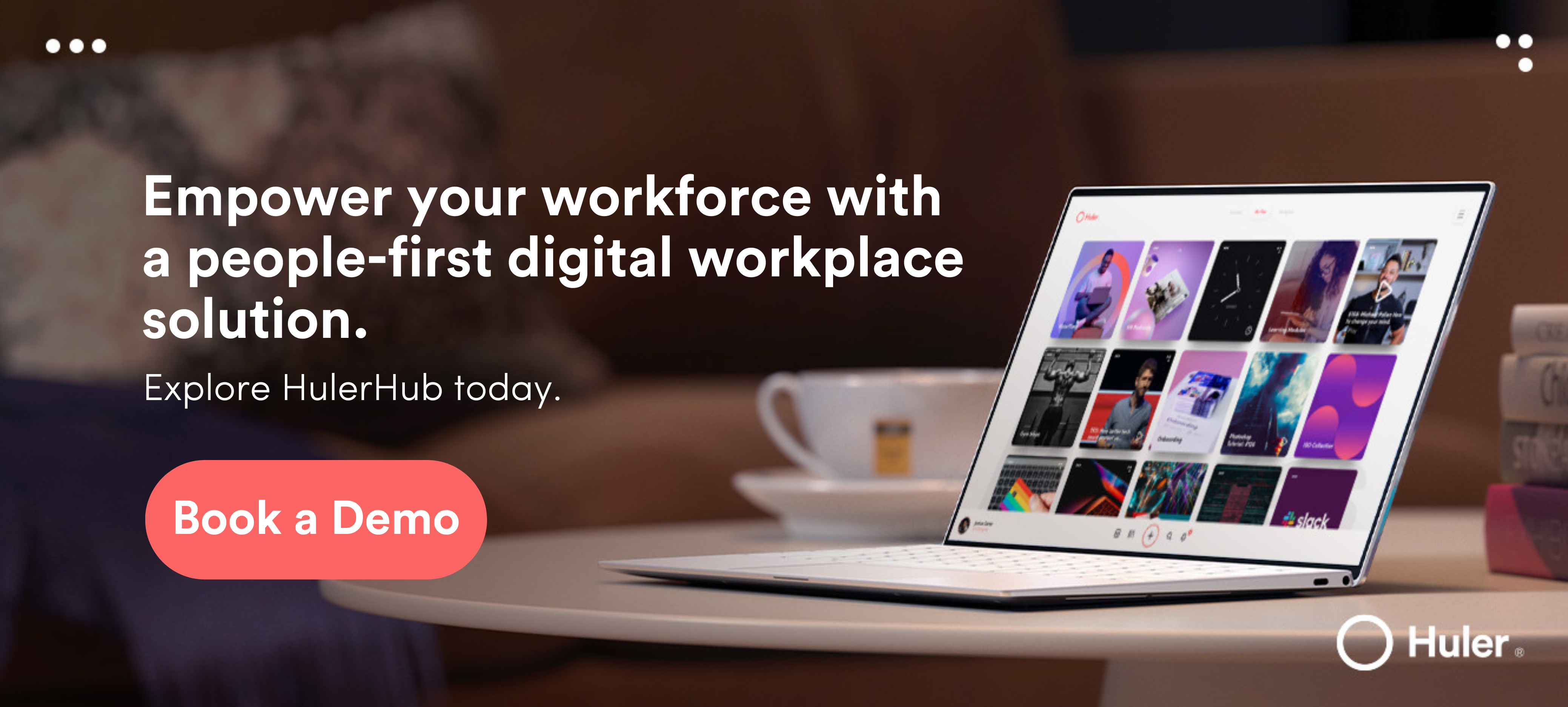The phrase “work from anywhere” has become quite the talking point recently. Particularly as more and more organisations move to hybrid working and remote-first models in order to meet the demands of their employees. Until 2021, working remotely was synonymous with working from home. This was true during the pandemic, when the large majority had no choice. But it was also true before that, too.
Now, however, the remote work landscape has changed and will continue to evolve over the coming weeks, months and years. As offices reopen and pandemic restrictions lift, there’s a new revolution to contend with…and it’s called: working from anywhere.
In this article, we’ll look at:
- What is Work From Anywhere (WFA)?
- Work from anywhere vs remote work
- The benefits of working from anywhere
- Common challenges
Ready? Let’s jump in!
What Is Work From Anywhere?
Work From Anywhere Definition
Work from anywhere (WFA) is a flexible approach to working, where a company or organisation empowers their employees to work productively and autonomously from anywhere, while remaining aligned and connected with company culture and goals.
This could be at home, in an office, from a coffee shop, on a train, in a co-working space, at a hotel…you get the idea.
Rather than focus on the literal definition of working from anywhere though, perhaps it’s more productive to focus on WFA as a concept. Having the ability to work from anywhere means having the tools, resources, technology, and flexibility at your disposal to set up your workspace and be productive at a location that is right for the task at hand. This is a notable departure from working traditions of old where it was believed that employees could only be productive in an office space.
WFA pushes back on the notion that work is a place you go and instead implies that it is a thing you do. The beauty of this is when work isn’t tethered to a single location, organisations can harness the power of environments geared towards productivity, collaboration and innovation – rather than waste precious time reinforcing arbitrary rules which can be limiting to growth.
Work From Anywhere vs Remote Work
So, work from anywhere and remote working ate the same thing, right?
Well, yes. Kind of. But the concept of work from anywhere is more than just a flexible working arrangement.
When the pandemic hit everyone like a bolt of lightning out of the blue, one thing became abundantly clear: lots of organisations weren’t prepared for a full-scale shift to remote work. Definitive, consistent policies and procedures weren’t in place, employees didn’t know how to work effectively away from the workplace, and the right technology wasn’t in place to facilitate productivity and collaboration.
Work from anywhere is a company-wide commitment to the notion that some or all employees can work effectively from anywhere. It is not a flexible working arrangement agreed on a case by case basis, but a normal way of working. And for that to be achieved, organisations need the right infrastructure in place to support WFA employees in being productive, collaborative, autonomous, connected and happy within it.
What Are The Benefits Of Working From Anywhere?
When you open your mind to the possibility of working from anywhere, there’s lots of benefits to be had.
Increased Productivity
There are certain types of work that require intense amounts of concentration and minimal distractions. As we all know too well, not every environment is perfect for this. In the office, for example, a developer might be subject to multiple interruptions while working on a tricky piece of code, which can lead to slower completion times and more errors.
With work from anywhere, employees are empowered to choose the right environment for the type of work they need to get done. This might not necessarily be the office or their home, depending on each place in time. The right environment could be a coffee shop, library, co-working space, home office or indeed a quiet corner within your workplace.
Flexibility
Work-life balance is a hot topic of late. When the majority of the workforce got a taste of what life could be like working on their own terms, the game changed for good.
While being tethered to a specific location can be quite limiting for some, work from anywhere gives employees the flexibility to tend to their everyday responsibilities (like taking the car for MOT or doing the school run) alongside work. Having this freedom of choice can help employees prioritise what’s important to them (such as their health or family life) while balancing the needs of the company. Employees given the choice to work from anywhere also feel more empowered, which leads to higher levels of motivation and productivity.
Better Collaboration
Lots of employers believe that working from anywhere will reduce collaboration and creativity. But this couldn’t be further from the truth. That being said, it’s important to be strategic about how people work together and what is done to facilitate that.
For many, collaboration, innovation and creativity happens best in the company of others. When individuals can come together and bounce off one another in person, there’s the potential for great things to happen.
Making the most of this in a WFA model means understanding that there is a time and place for everything. Increasingly, many businesses are doing away with the siloed cubicles of old and making their office spaces hubs of collaboration. This approach understands that collaboration is experiential. People need to feel connected, seen, and heard for it to work. This is entirely possible in a WFA model if employers take steps to make accessible collaboration spaces and tools (such as video conferencing) readily available to their teams.
Resilience & Adaptability
In 2020, businesses were forced to adapt to new ways of working overnight. This demonstrated to all of us that the need to adapt is paramount for growth regardless of the circumstances.
It’s fair to say that the pandemic has taught us all that, to paraphrase Forrest Gump, you never know what you’re going to get in life. Having the infrastructure to work from anywhere gives you business the edge should something beyond your control happen again. It also means your employees are primed and prepped to be productive from anywhere with an innate understanding of their own best ways of working without the watchful eyes of their managers upon them.
Less Skills Gaps
There are two elements to this benefit in a work from anywhere model. The first is that, by offering remote and in-office working, you increase the talent pool in which you can explore. Having the flexibility to recruit an individual who isn’t local provides the flexibility to fill those skills gaps in your organisation.
The second element to this is that working from anywhere brings with it digital transformation. This transition opens the door to many new possibilities. For example, using automation to make certain processes more efficient and less time-consuming.
Saving time with technology can also free up your employees to develop in other areas they may not have had the time to explore previously, which can provide numerous benefits to the business as a whole.
Happier Employees
Employee wellbeing and happiness is paramount to a successful business. Your people are the foundation of your organisation; without them nothing works as it should.
Empowering employees with a work from anywhere model (and the tools to do it) can help them to pursue a more balanced life in which they can pursue the areas of work they love, stay in touch with colleagues, prioritise what’s important to them, and find room to grow and evolve.
What Are The Challenges Of Working From Anywhere?
While there are some challenges to embracing a work from anywhere model, the benefits far outweigh them. When done correctly, these difficulties can be mitigated to create a strong, resilient, innovative and focused workforce.
Insufficient Tech
As we mentioned above, a work from anywhere model inevitably leads to digital transformation. When done well, this can boost productivity, empower your employees and help to plug the skills gaps in your organisation.
One of the biggest priorities for businesses looking to lean in to this way of working is ensuring the right tech is in place to support WFA. The large majority of knowledge workers use a myriad of different software and tools to do their day to day roles. If doing this from home, a coffee shop, the office or a co-working space is difficult it will lead to burnout and low engagement. The rise in popularity of digital workplace platforms and virtual offices is a powerful signal to employers that, if they want to make any form of hybrid work successful, they must offer frictionless tools that facilitate productivity from day one.
Communication Difficulties
A distributed workforce empowered to work flexibly anywhere can find communicating a struggle. We’ve learned in recent years that communication tools and apps like Zoom, Skype, and Microsoft Teams are invaluable for synchronous communication, however they don’t always work for employees in different time-zones.
This challenge most definitely originates from the fact that most organisations haven’t had to contend with asynchronous communication before outside of emails.
While it might seem like a difficult undertaking, getting employees used to asynchronous communication and giving them the tools to do it (such as a Slack channel or shared Google Doc) can result in better problem solving and even more collaboration between colleagues that don’t work in the same time zone.
Of course, we’re not saying there’s no longer a place for synchronous, live communication. There absolutely is! And care should be taken to ensure those team calls and group chats are accessible to all involved rather than exclusive based on time-zone.
Knowledge Sharing
Another challenge to working from anywhere is how employees share knowledge across a distributed work model. One of the biggest benefits of being exclusively based on-site is that everyone is under one roof. So, if someone has a question, they can more often than not seek out the appropriate person and find the answer relatively quickly.
One way to overcome this is to ensure information is readily available and searchable in an accessible virtual space like an intranet or online repository. Having a single place for content and comms eliminates guess work and makes the process of seeking out relevant information much easier. In a similar vein, platforms such as employee forums can be utilised for sharing knowledge, providing a comprehensive one-stop shop where those unsure of themselves can ask questions and the experts within your organisation can answer them.
Another way to encourage knowledge sharing in a distributed workforce is through mentoring programs. A big concern for many organisations taking steps to work from anywhere and embrace a hybrid approach is how junior members of staff go about learning things they would have previously learned on the job. Offering mentoring to team members gives them a structured program in which they can learn, ask questions and grow regardless of where they are. What’s more, the working from anywhere model also encourages mentors and mentees to come together and collaborate with each other face-to-face should they wish to.
Low Employee Engagement
Many managers and workers alike worry that working apart will lead to isolation and sense of disconnection from each other and the organisation as a whole. However, it’s important to acknowledge that this isn’t a symptom of working remotely (or indeed from anywhere). Instead, it’s a symptom of poor communication.
Remote workers have and do report feeling cut off from information they would normally naturally get from simply being present in an office space. What’s more, communicating virtually is not always the same as having a one-on-one chat in person with your manager or colleagues.
In the work from anywhere model, there are a number of opportunities to ensure employee engagement doesn’t wane and your people feel connected to the business. The biggest of these is to facilitate intentional experiences. This can be achieved through providing both face to face and virtual experiences that provide space for employees and leaders to chat, get to know one another, and share ideas as they would normally do without the friction caused by technology.
Difficulties Evaluating Performance
In an office space, it’s easy to conduct one-to-one appraisals or evaluate an employee’s performance and soft skills. However, this isn’t necessarily true with distributed workforces.
Some organisations recognised this difficulty and turned to productivity trackers like presence indicators and always on webcams to keep tabs on employees. However, these extreme measures felt patronising and invasive with arguably no effect on output. Indeed, many employees disliked these measures so much they found ways to ‘game’ the system.
Comprehensive thought must be given to how leaders monitor productivity and evaluate performance within their distributed workforce. Firstly, they should address any unconscious bias against those that work remotely vs those that come in the office. Secondly, robust processes should be put in place to evaluate performance and reward progress equally within a WFA model.
Cybersecurity Concerns
WFA doesn’t just have human implications, it has digital ones too. When you embrace a work from anywhere approach, you need to do more to safeguard and protect employee, corporate and customer data as it becomes more spread out and accessible.
To do this, more and more organisations are moving away from traditional perimeter-based network defence to a new, zero trust security model that is more fitting to the mobile workforce. The Zero Trust model verifies each request as though it originates from an open network, regardless of where the request originates or what resource it accesses. That means that every access request is fully authenticated, authorised and encrypted before access is granted.
Equality, Fairness & Equal Opportunities
There are two sides to this coin when it comes to work from anywhere. On the one hand, WFA has the potential to make the workplace more accessible than ever for some individuals. On the other, it also has the potential to make certain sectors of your workforce invisible, namely those who choose to work remotely for the majority of the time.
It is important, when building your WFA model, that you stay sensitive to these kinds of biases and take steps to balance them. For example, there is a real danger that remote workers get passed over for promotion or a pay rise despite being just as productive and skilled as their in-office counterparts. Failing to address these areas and listen to the needs of your diverse workforce runs the risk of your organisation losing invaluable talent to other businesses who are willing to recognise and reward to efforts of employees wherever they work.
It Doesn’t Work For Every Job Role
Finally, let’s address the elephant in the room. Working from anywhere doesn’t work for everyone. Some jobs have to be done on-site, from a physical location and that will not change – at least not yet.
That being said, there are some nuances to this. Technology such as virtual reality and robotics are making it possible for some workers to carry out even the most technical jobs remotely.
What’s more, in taking a good hard look at your organisation and the people within it, you might realise that more work can be done from anywhere than you think. And that providing the flexibility to do so empowers your employees to be more present, engaged and productive than ever before!
Implementing WFA With Huler
Here at Huler, we love the concept of work from anywhere. We recognise that it is a powerful way to help employees balance their work and life, while capitalising on the power of collaborative, face-to-face interactions. Of course, for many organisations, mobilising a WFA policy requires quite a big shift in culture, tech, operations and leadership styles.
The good news is that many of you are already halfway there. The events of the pandemic proved that employees were capable of being productive while working remotely – and that’s really half the battle. What comes next is understanding how to iron out the creases within quickly implemented solutions to maximise their benefits.
That’s where our innovative, forward thinking digital workplace platform comes in. We developed HulerHub to meet the needs of the evolving workplace and support businesses to grow and excel regardless of the location of their workplace. Intrigued? Of course you are! Request a demo to see it for yourself and discover exactly what it can do for your business.







